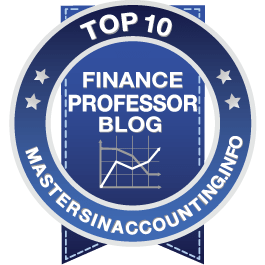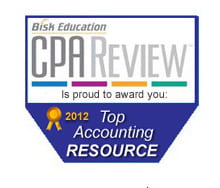CFA Society, Washington DC: “Bull vs. Bear” Debate
I participated as the “bull” in this CFA Society, Washington, DC “Bull vs. Bear Debate” on September 9, 2020.
REVISITING A STOCKS DISCUSSION, IN A VERY DIFFERENT TIME
SMITH BRAIN TRUST – Two years ago, David Kass, clinical professor of finance at the University of Maryland’s Robert H. Smith School of Business, participated in a debate hosted by the CFA Society of Washington, D.C. The topic: Stock Market Bull vs. Bear.
“I was the bull and basically got it right,” says Kass, who returned to help reprise the debate earlier this month. His counterpart was Michael P. Lebowitz, economic and investment researcher for 720 Global and Real Investment Advice. The pair discussed the potential impact of rising volatility, changing interest rates, political instability and geopolitical risk.
Here are some of Kass’ insights, an edited excerpt from The U.S. Equities Boom or Bust Debate:
Equities, then and now. “The market – measured by the S&P 500 with dividends included – was up 28% or 12.5% compounded annually from June 6, 2018, which exceeds the historical annual average of about 10%. So, the markets have done well even with COVID-19, which has disrupted everything. As I mentioned back then – it’s still true today – the primary determinant of stock prices is, No. 1: interest rates, and No. 2: corporate earnings. As I mentioned then, interest rates are at historically low levels, and even lower today.
“Corporate earnings since about 1970 have been growing at 8.5% a year compounded. And indeed since 1965, for the S&P 500 with dividends included, the compounded rate of return is 10% a year – very close to the growth rate in corporate earnings.
“As I mentioned last time, every recession since World War II was preceded by a Federal Reserve tightening, except for the 2007-2009 [financial crisis], which was precipitated largely by too much debt in the housing market. Subprime mortgages contributed to it, plus there was some tightening by the Federal Reserve. And of course, the second exception is 2020, caused by a pandemic that very few people had on their radar.”
Looking to the future: “Just a couple weeks ago [Fed Chairman] Jay Powell basically said interest rates will be kept close to zero indefinitely, which could be the next year or two and is the oxygen for the stock market.
“The issue then, is valuation. The economy is growing. Corporate profits, after certainly being hit very hard in the pandemic, absolutely are turning around. But in terms of valuation, the S&P 500, now a PE based on 2019 earnings, is around 20 – somewhat high historically.
“But interest rates are close to zero. Where else are you going to put your money? In Treasury bonds? Treasury bonds right now, the 10-year note is yielding 0.7% today. Do you know what the price earnings ratio of that is? It’s 140:1. That’s not a very attractive alternative. Looking to the future there are major risks here.
“Certainly the No. 1 risk is the path of COVID-19. Will there be a second wave? When students go home or when they’re on the campuses? Could this force the return of a lockdown, a slowing down of the economy? When will we have a vaccine?
“The second major risk is the election. And there is the risk of a possibly contested election – a big risk. If Joe Biden is elected and the Democrats sweep Congress, taxes are likely going up. Capital gains taxes are likely going up and therefore lead to a realization of capital gains by many shareholders after the election and before 2021. There could be some fair amount of selling, which would put downward pressure on stock prices.
“On the other side of the coin of a Biden victory, international trade would be restored, there’ll be less tension with other countries and more cooperation with our friends from Europe. If Biden is reelected with a Republican Congress, it’s not clear what the outcome would be in terms of policy, though trade may be eased somewhat. But President Trump reelected with a Republican Congress would lead to more policies like we’ve had recently. And President Trump with a Democratic congress is an issue that has not been discussed much in the media and raises questions.”
The dramatic stock rebound. “I was surprised by the rapid recovery in the financial markets – a V-shaped recovery. An explanation is the massive government spending [through] the Federal Reserve, along with Congress and the Treasury. Basically, there was a massive hole in the economy that they plugged to get us to the time when we have a vaccine, and it was absolutely necessary. Otherwise the economy would have been in a freefall.
“[This leads to] one of the issues to be decided in this election in less than two months. It would appear if there’s a Democratic sweep, then a congressional stimulus or stimuli, if needed, come January 2021 will be greater than that being offered right now. But this is necessary to get us back on our feet with inflation, less than 2 percent, virtually dormant. Yes, in the end, we would have to unwind a lot of this borrowing and spending. But in the current, lack-of-inflationary environment, it’s the only right thing to do.”
Risks for lower prices in the market, going forward? “Gradual increases in inflation and interest rates [are those risks]. Once the Federal Reserve turns around and starts raising interest rates, that will exert major negative pressure on stock prices. But I don’t see that happening for at least a couple years and until we are where we were pre-COVID. So yes, we do have to unwind at some point. But I could see that done smoothly or at least postponed two to three years before it needs to be addressed.”




